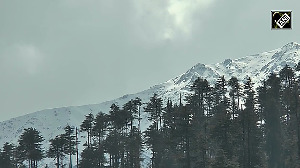Poor governance and mediocre short-sighted politics are destroying the paradise that Goa was as its environment, water table, culture and way of life is drastically threatened by tourism and migration, points out Ramesh Menon.
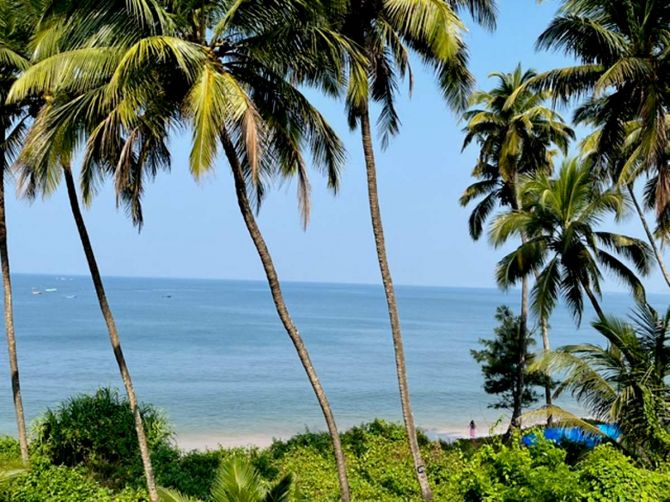
When you utter the word Goa, which images open up in your mind?
Invariably, it will be images of lush green fields in the countryside dotted with coconut palms and other trees that sway in the wind and shine when it has rained.
You also imagine the scenic beauty of the Western Ghats, considered one of the richest reservoirs of biodiversity in the world, as it is punctuated with a fascinating mix of trees, plants, reptiles, insects, birds and animals.
You also see quaint Portuguese-style houses, clean beaches and merry locals who live to enjoy themselves with their feni, wine and good music.
Ah, yes, you also feel the aroma of various types of exotic cuisines, fish curry with rice.
All this caught the imagination of both domestic and international tourists who come in droves year after year. They love the simple lifestyle of the locals and their warm hospitality.
But a lot of it is changing.
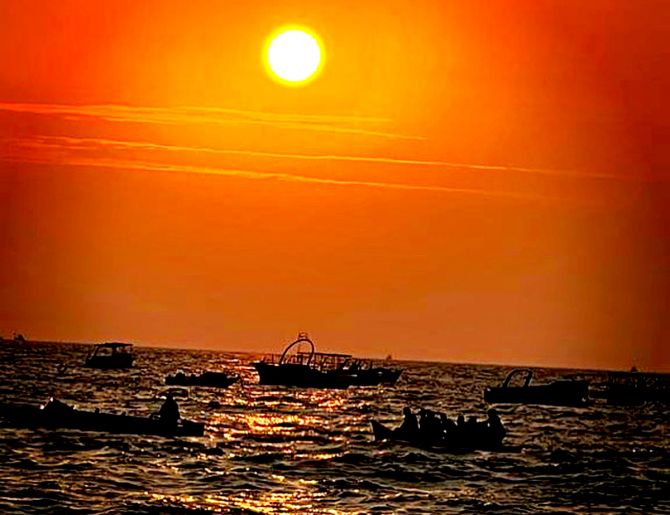
With thousands of tourists at any given point in time, the environment is taking a beating.
The countryside is dotted with hotels, restaurants, and homestays. Liquor stores and little shops catering to tourists.
Real estate companies are vying with each other to build cottages, villas and flats all over the state as residents from mainland India wish to shift to the scenic state or build a second home.
Rapid urbanisation is unable to sustain itself, given the poor infrastructure. It is no more the paradise it was.
Public transport is in a mess. Uber and Ola services are unavailable as the taxi groups will not let it come in.
So cab and auto fares are very unreasonable. It is common for cab drivers to demand Rs 100 or more for a kilometre.
Waste management is a serious issue plaguing the state, especially in rural areas, as garbage tied in polythene bags is just flung on the roadsides from passing vehicles.
Many light it up outside their homes; it is common to see smoke smouldering in the villages throughout the day. A lot of the garbage contains plastic making the smoke toxic.
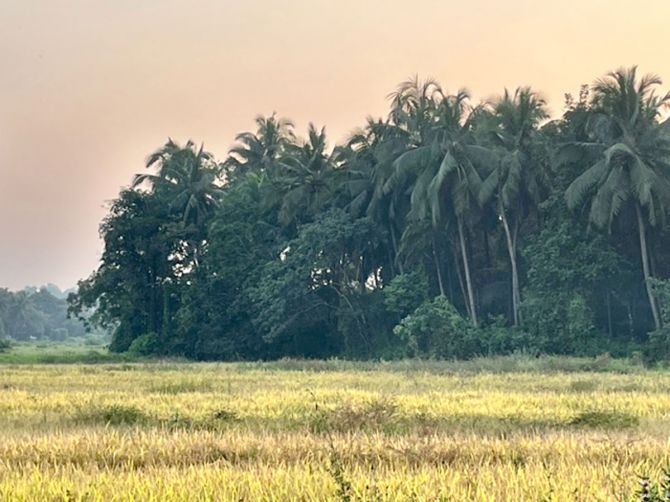
Acting on a Bombay high court order panchayats put up boards in villages warning residents not to throw garbage in the open and if they did the fine would be Rs 5,000. Ironically, garbage is piled up just below the boards and in areas close to it.
Goa was liberated on December 19, 1961 after 450 years of Portuguese rule by Indian forces.
Ever since it has grown into a tourist destination attracting about 2 million tourists every year.
One of the first things the national leadership announced after liberation was to make Goa a developed state.
So, many migrants started coming in, hoping to get jobs from Kerala, Maharashtra and Karnataka.
Until then, it was relatively quiet and peaceful, with a laid-back style close to nature, social customs and ecological traditions that respected the environment.
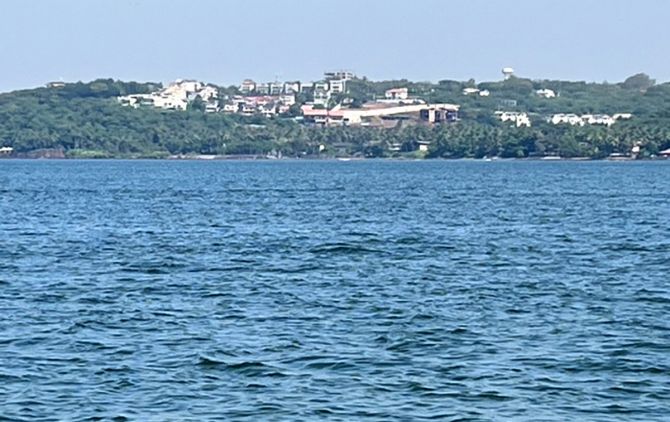
Environmentalists like Claude Alvares, who lives in Goa, have for years cautioned numerous governments to step in and save the state threatened by multiple environmental challenges before it is too late.
Kumar Kalanand Mani, secretary, Peaceful Society, a Goa-based NGO advocating environmental issues, says that the state is plagued by loss of surface area due to urbanisation, tourism, construction and industrialisation.
"All these factors resulted in the coastal ecology being eroded while traditional economic and social practices of coastal life were gradually destroyed," says Mani.
Till 1961, the population growth was 19 percent.
In the following ten years, it jumped to 37 percent as migration grew after liberation. Ever since it has been increasing year after year.
Goa's population in 2022 was estimated at 1,560,000. Apart from this, there is a floating population of about 2 million tourists visiting annually.
Many tourists come and go, but many stay back to construct or buy a second home, given its natural beauty and clean beaches. The locals are warm and hospitable.
As land was required for the increasing demand for hotels, restaurants and houses, forests were cut down mainly in the plateaus of Porvorim, Betide, Khandear, Cundaim, Thivim, Bambolim and others.
Points out Mani: "These forests enriched the water table, kept the areas around cool and fresh. Residents who lived in these areas did not even use a fan. Now, air-conditioners are required. More importantly, the forests had allowed biodiversity to flourish."

With rampant construction, the coastal ecology got gradually eroded and destroyed.
So did ecological practices as the change came in with tourists.
It encouraged materialism, and the focus shifted to minting from tourism.
With restaurants and hotels sprouting all over, especially near the beach fronts, traditional economic and social practices of coastal life got destroyed, putting the fragile ecosystem in danger.
As demand for construction grew and the land was scarce, especially along Goa's picture postcard beaches, the Coastal Regulation Zone Management law was changed.
It mandated that there would be no development or construction for 500 metres from where the high tide reached. The amendment has changed it to 100 metres.
Environmentalists have warned of the consequences, but no one is listening.
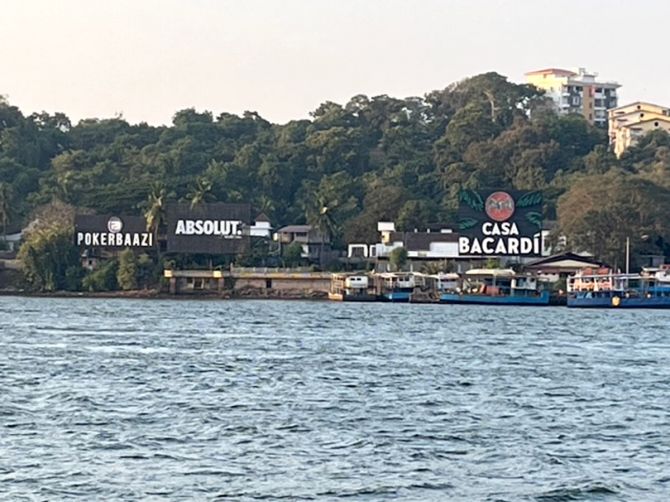
By the end of the eighties, Goa became a top tourist destination catering to the taste of Europeans who came in charter flights.
Presently, around 1,200 flights fly into Goa every month. With a new airport operating from Moga, this will increase to around 4,800 flights.
After the release in 1971 of Dev Anand's Hare Rama Hare Krishna, a Hindi film that revolved around the existential crisis hippies went through, Goa became an attractive destination for Indian tourists.
They were suddenly interested to know more about their bohemian lifestyle and their propensity to consume drugs and move around half-naked on the beaches.
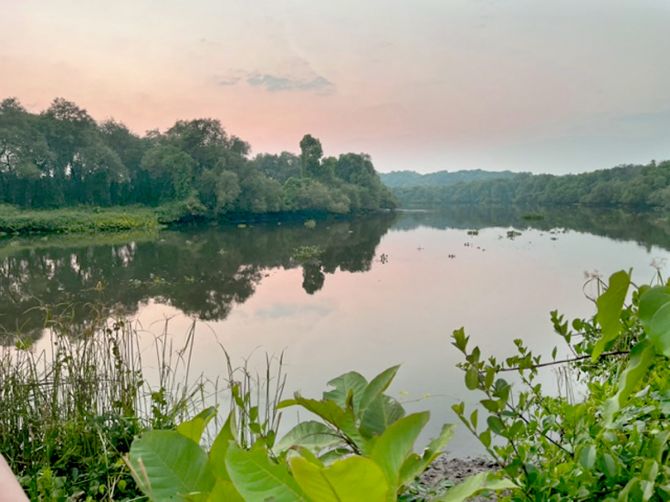
In 1981, a conference of Gandhians was held in Goa.
It surprised the organiser when participants were eager to wrap up proceedings much before schedule as they all wanted to go to Calangute beach, which was famed for its scantily-clad foreigners at that time.
As wide-eyed Indian tourists flocked to Calangute, the foreigners gradually moved out to quieter locations like Arambol, Palolem and Morjim, wanting privacy and peace.
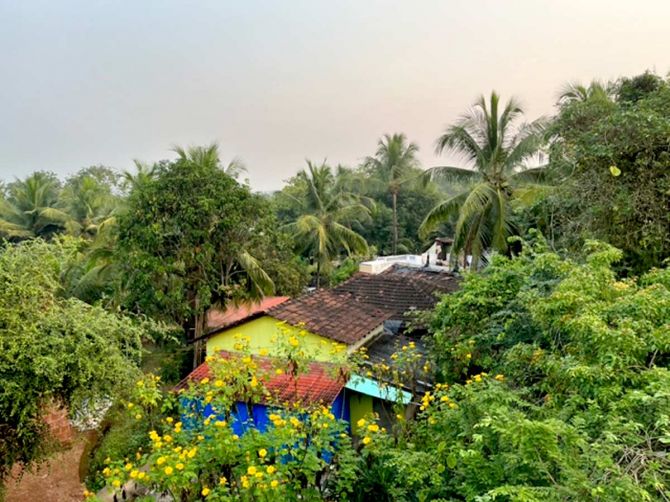
Today, one of the biggest concerns in Goa is the falling water table.
Statistics show it is the worst affected state in India.
According to a question raised in the Lok Sabha, Goa has the largest percentage of wells with the highest decline of water levels.
As many as 85 percent of its wells are affected. Villagers are highly dependent on well water for farming and daily use.
Agriculture in Goa seems destined to decline.
More than one-sixth of the working population is dependent on it. But today, agricultural land is being diverted for housing projects, industries, restaurants and hotels in the coastal belt.
Many homestays have been constructed on land that were earlier fields.
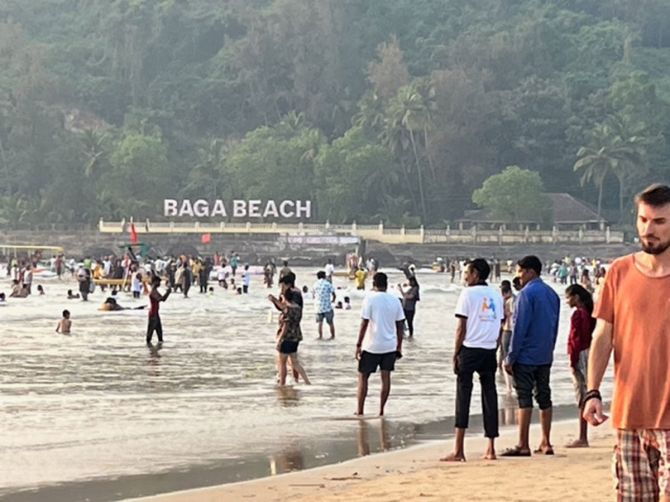
A study by The Energy and Resources Institute (TERI) showed that almost 65 to 75 percent of the agricultural land was being converted for residential purposes.
The water crisis is accurate, and as things stand, it will only get worse with the pressure of tourism, many hotels and restaurants and a booming real-estate industry that needs a lot of water.
Many new projects are huge gated colonies with unsustainable lifestyles that consume a lot of water for daily use in bathrooms, swimming pools and lush gardens.
"Goa gets an average of over 140 inches of rainfall, but there is a serious water shortage as there are no efforts to create water conservation systems," says Mani, adding, "There are vested interests who are against water conservation as tankers sell water to housing colonies all over Goa."
The rivers in Goa could have been a saver in such a crisis.
Goa has a 105 kilometre coastline with ten rivers emptying into the Arabian Sea. But the rivers are heavily polluted with industrial effluent, domestic sewage, waste coming from settlements along the rivers, mining waste dumped earlier by illegal miners, and the diesel fumes emitted from boats ferrying tourists and fishermen.

As one walks by the majestic Mandovi river in the capital city of Panaji, one cannot escape the stink of the putrefying water on its banks.
Other water bodies like lakes, both natural and artificial, are vast repositories of biodiversity.
It sees both domestic and migratory birds all through the year. But lakes also are in danger with encroachment happening along with pollution.
Water monitoring of eight significant lakes by the Goa State Pollution Board showed a high level of toxicity in all of them.
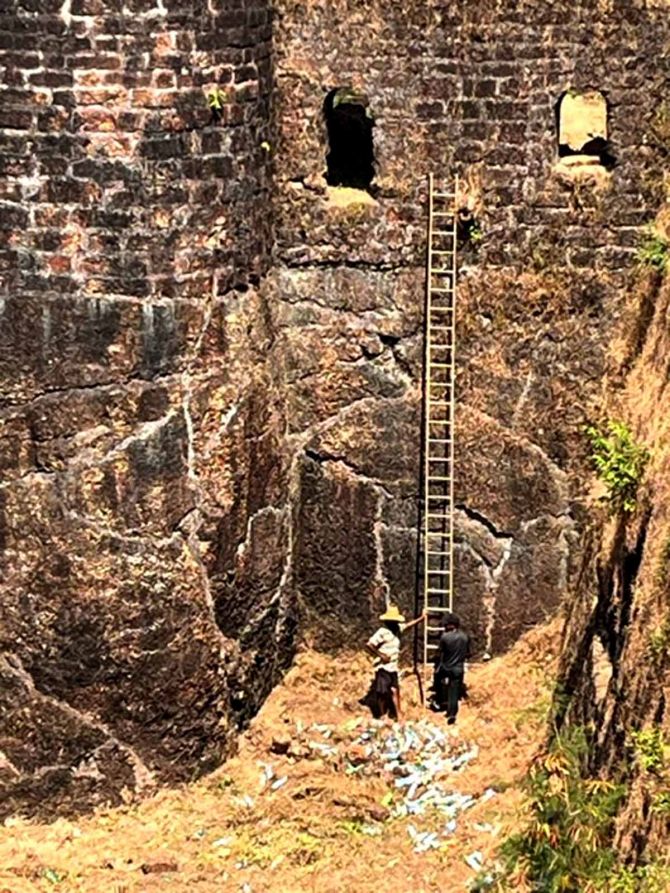
Till the eighties, regional parties ruled Goa, like the Maharashtra Gomantak Party and United Goans.
When national parties jumped into the fray, everything changed and the outlook was to join the race for development and compete nationally.
It started with a construction boom to feed tourism and the desire of non-Goans to have a second home in Goa.
Another disruptor to the Goan way of life was the large-scale influx of migrants who came in from Kerala, Odisha, West Bengal, Gujarat, Kashmir, Uttar Pradesh, Bihar and Jharkhand.
They came in to grab new opportunities in construction, manufacturing, pharma, electronics, retail and others.
Migrants came from all over: Many decided to settle in Goa as they do not want to return to the chaos of their home states.
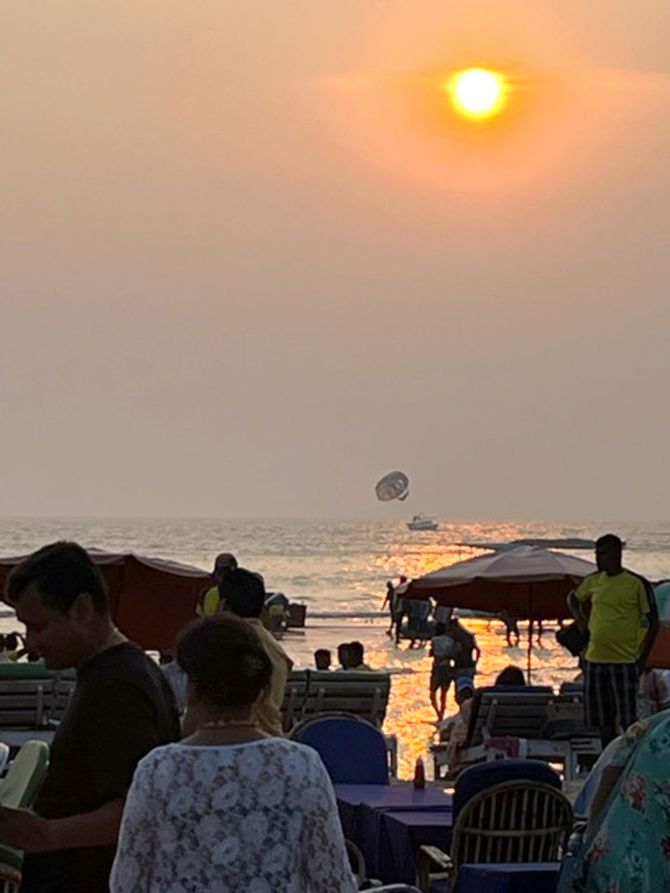
The environmental degradation of Goa started when the Portuguese began to mine iron ore and bauxite. But when Indian companies came in, they enlarged operations in the foothills of the fragile western Ghats.
It opened the heart of the hills and led to large-scale destruction and environmental degradation, air pollution, contamination of water sources, damage to forests, water aquifers, agriculture, fisheries, and the destruction of water conservation systems.
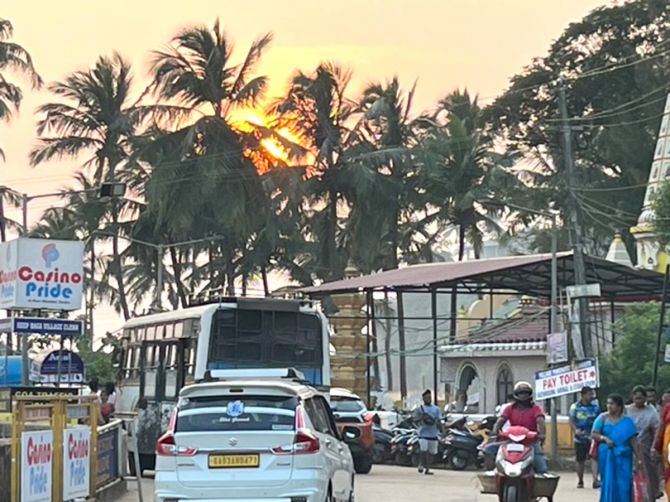
A study by TERI 28 years ago showed an excess of iron and manganese in the Salaulim river.
Around 2000, there was a great demand for iron and manganese due to the preparation for the Beijing Olympics.
Goa stepped in to exploit that opportunity as iron ore prices had crossed $180 a tonne.
Transportation of iron ore through roads and barges led to pollution never seen before.
Extractions were dumped in rivers as illegal mining companies violated the rules and payment of fees and taxes.
"It is a scam involving over Rs 35,000 crore (Rs 350 billion), and the guilty must be punished and costs recovered by the state," says Mani.
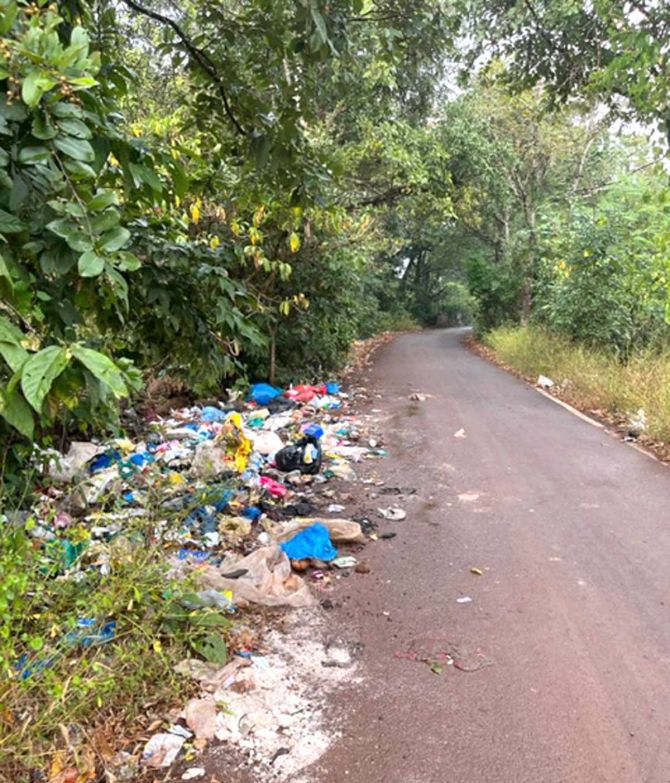
Due to a public uproar led by activists who warned of the disastrous consequences of mining, the Supreme Court closed down mining in 2012. Goa had over 900 operational mines.
A judicial commission headed by Justice M B Shah estimated that the public exchequer had lost nearly Rs 34,935 crore(Rs 349.35 billion) due to illegal mining in Goa.
Investigations revealed that vast quantities of iron ore were illegally exported out of the state, and mines were functioning in reserved forest areas violating wildlife laws.
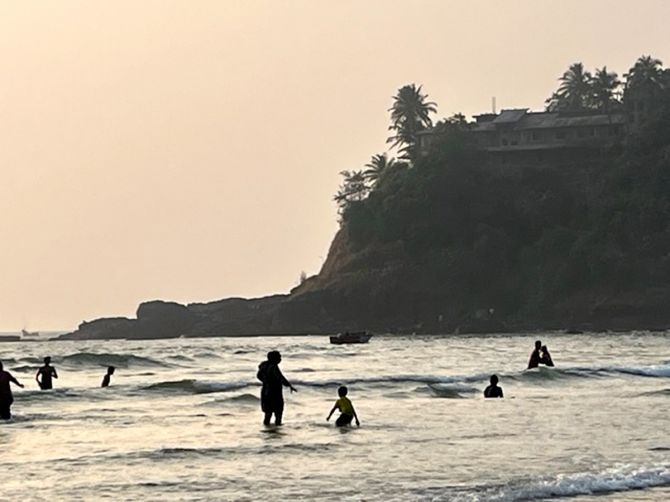
Chief Minister Pramod Sawant now says he wants to restart mining and will start a process soon to float tenders.
Mining was stopped as there was a public outcry and visible damage that it did.
By stopping mining, the state loses about Rs 1,000 crore (Rs 10 billion) annually. Sawant does not want to let it go.
The fragile ecosystem of Goa needs immediate attention and protection. But with numerous successive governments of different political hues showing that all they are interested in is grabbing power, there is little hope.
Years later, we will all say that poor governance and mediocre narrow-minded politics destroyed Goa.
Ramesh Menon is an author, award-winning journalist, documentary film-maker and educator.
Feature Presentation: Rajesh Alva/Rediff.com







